How to turn 30 in style: A birthday to remember in Cornwall
I discovered why having a winter birthday isn't so bad...
Read MoreI discovered why having a winter birthday isn't so bad...
Read More
Taking the plunge (Image: Alastair Scarlett)
I’m making a cup of tea underwater.
I go through the process - kettle on, milk out, teabag in mug - but it’s all in my head.
Going through this everyday routine helps take my mind off the fact that I’ve been lying face down in a swimming pool for over two minutes.
This is my first taste of freediving - the art of diving while holding your breath - and Freedive UK instructor Ian Donald has just let me in to the secret of success.
“The most important thing is to relax,” he says, as I arrive at the Glendorgal Hotel in Newquay where the course is running. “If you push away anxiety you’ll stay down longer.
“Some people achieve this by thinking of a happy holiday memory, others use something boring - like their commute or making a cup of tea.”
But there’s nothing boring about this freediving lesson - because by the end I will have transformed into a mermaid, complete with a tail that would leave Disney’s Ariel green with envy.
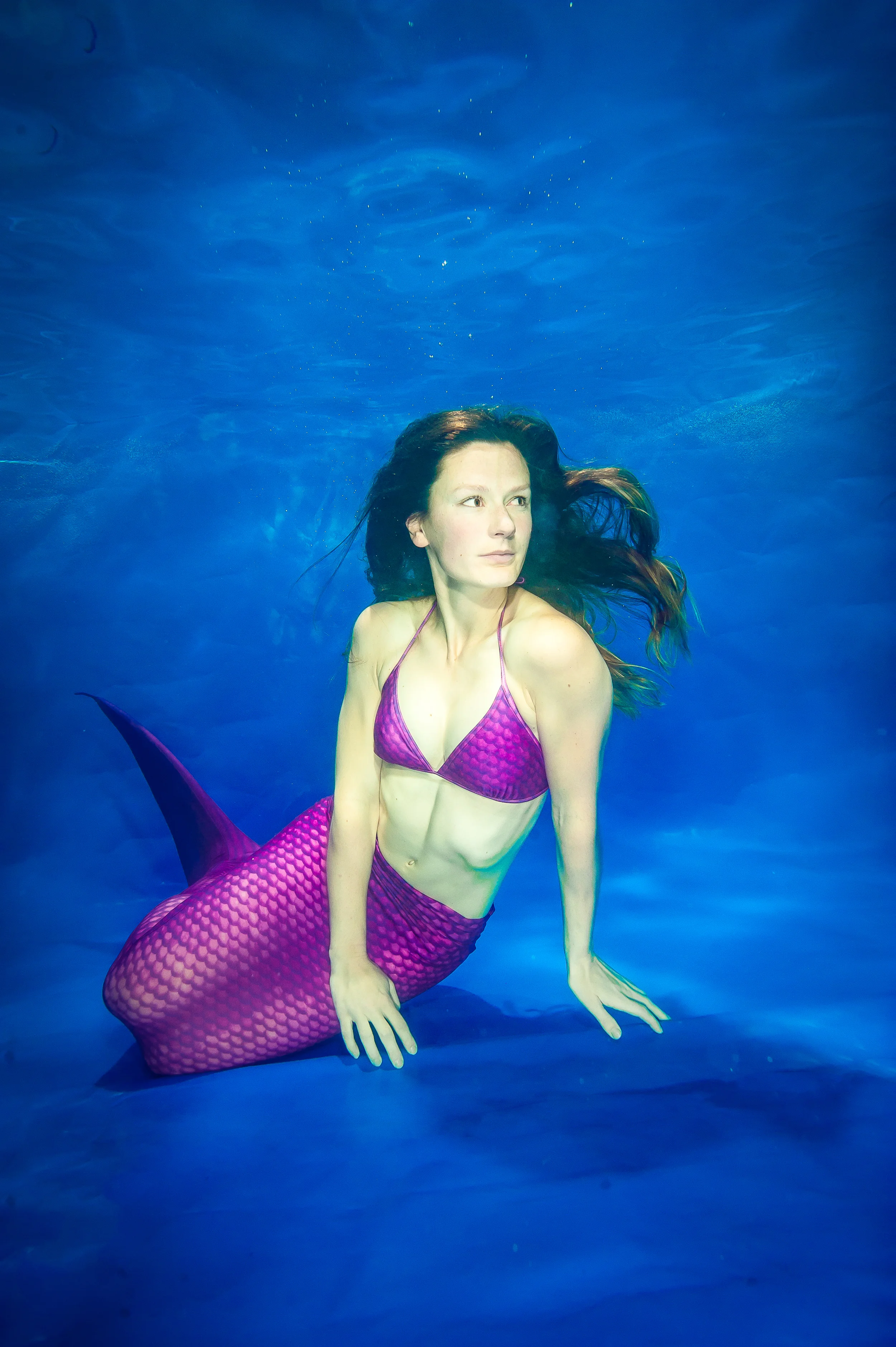
Learning the ropes at the UK's first mermaid school (Image: Alastair Scarlett)
I’m signed up to Britain’s first Mermaid Course, designed to teach you how to glide effortlessly underwater like the mythical sea creature.
Ian set it up after noticing a growing popularity for mermaids online.
‘Mermaiding’ has become so popular that it’s now a profession, with Ariel-esque women being paid to model underwater and perform shows in aquariums, from kids parties to posh hotels.
As we pull on wetsuits and goggles, Ian says: “We wanted to change the view that freediving is frightening and show that it can be fun.
“It’s very safe if you do it properly, with no risk of failing equipment. If being a mermaid gets more people into the sport, then that’s a good thing.”
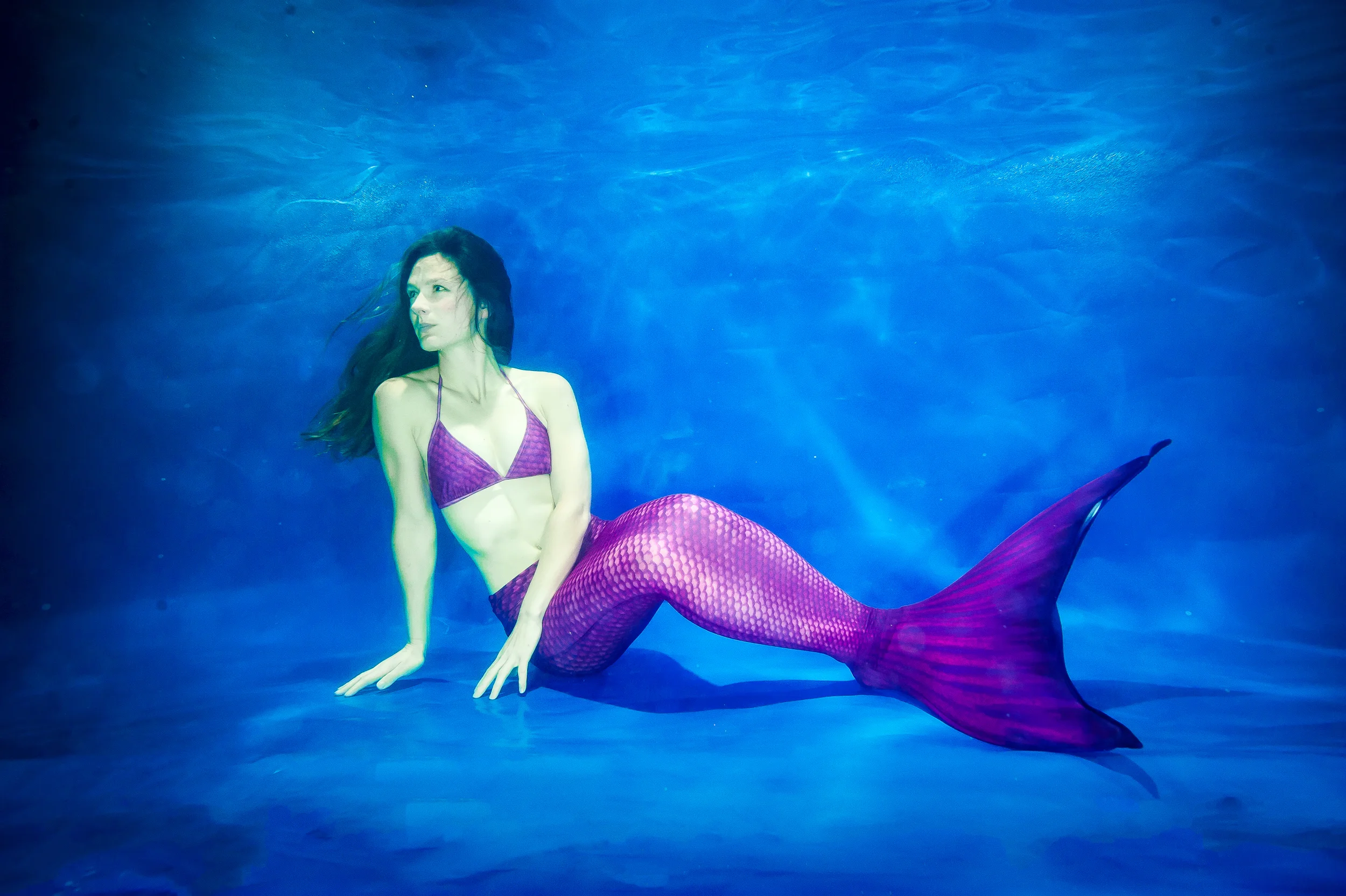
Channeling my inner Ariel (Image: Alastair Scarlett)
But before I can so much as pick the colour of my tail, I need to sort out my breathing in preparation to go under.
Ian divides the breath-holding process into thirds. In the first third of time underwater, we feel comfortable.
During the second third, we get the urge to breathe as carbon dioxide starts building up - this is when most people surface.
If you resist this urge, you enter the third phase, feeling contractions in your breathing muscles (diaphragm and intercostal). This is a signal to come up.
After floating on my back breathing calmly for two minutes, I go under.
I come up before I mean to - my body’s natural instinct to expel carbon dioxide overriding the my mind’s desire to stay down.
But I keep going down and on my third attempt, I feel my diaphragm flex as I make it to 2 minutes 39.
Next, how to swim like a mermaid.
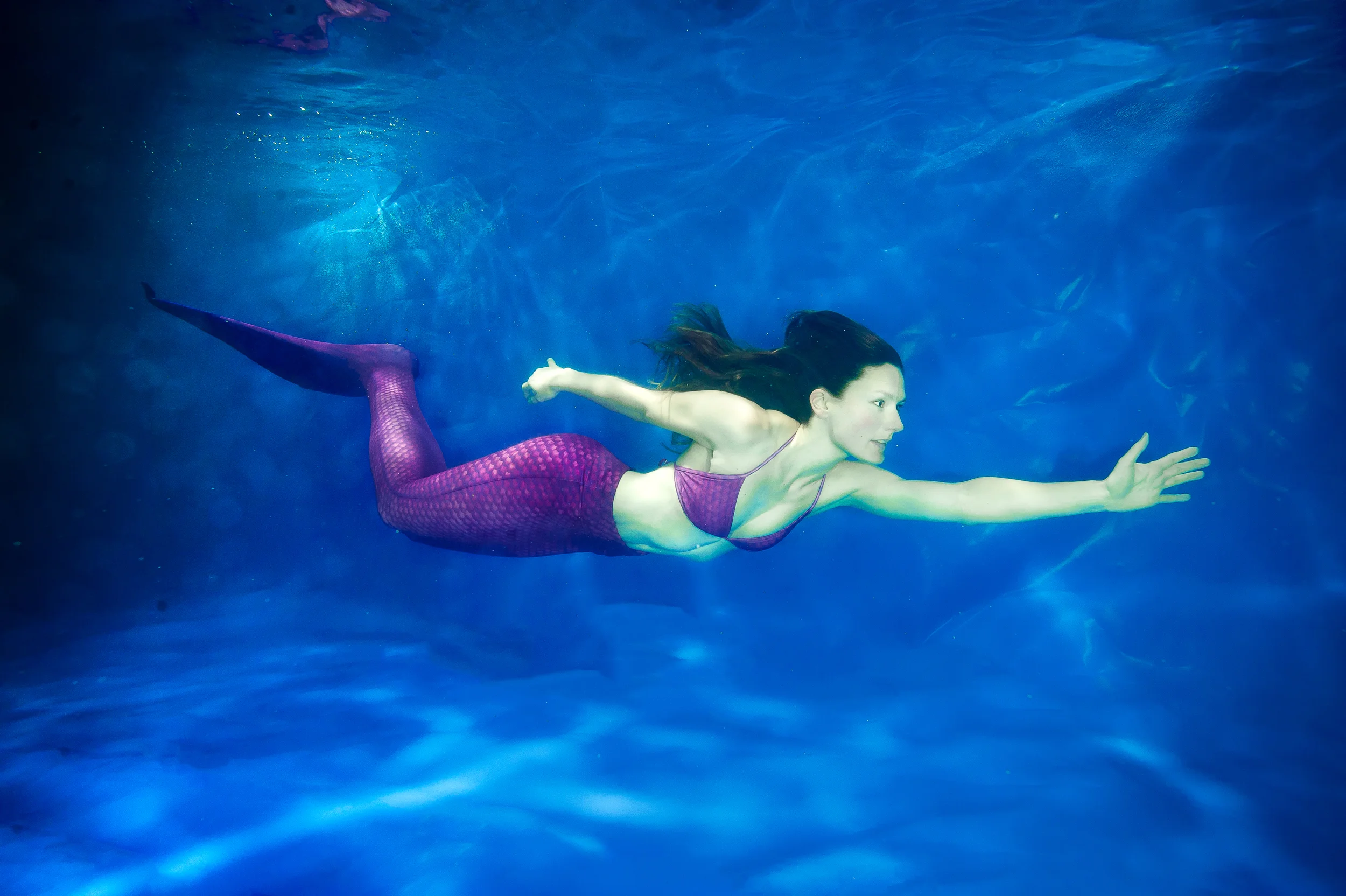
Learning how to swim like a mermaid (Image: Alastair Scarlett)
I slip my feet into a monofin (a two-foot single flipper), the same style used to break freediving world records.
The idea is to engage your core and keep strong legs to create an undulating motion that begins at your outstretched hands and ends at the fin.
But after a few laps with floats and then weight belts, I’m still struggling to make swimming with my feet together look effortless.
Maybe a pink, scaly tail will help.
Wearing it feels like I’ve squeezed both legs into the sleeve of a Lycra top and I wobble and hop my way back into the pool.
A professional mermaid’s job involves underwater modelling - and as I give it a go, I discover that it’s much harder than it seems.
Try opening your eyes underwater, ensuring that your hair’s swirling in the right direction, and making it look natural, and you’ll see just how tricky it is.

Posing underwater is trickier than it seems (Image: Alastair Scarlett)
I exhale deeply to make my body heavy enough to sink to the pool floor and remain there, then pose for freediving photographer Alastair Scarlett.
He can be booked at an additional charge to come along and take photos, immortalising your day as a mermaid.
All the instruction begins to come together - I’m staying under for longer and am actually beginning to relax.
As I make a final lap of the pool, I embrace my inner mermaid, diving down and gliding easily through the water with a flip of the tail that has replaced my legs.
In my very own ‘sea’, I feel waves of calmness wash over me - this must be just how real mermaids feel.
Or maybe all this breath-holding’s gone to my head.
A 3km paddle, 30km mountain bike ride and 5km trail run - SupBikeRun is no ordinary triathlon, which I discovered when I took on the challenge in the Peak District last month.
Here's a quick video I filmed along the way - please excuse the mud and sweat!
Thanks to Matt Dunkinson and Dominika Maj for the extra footage.
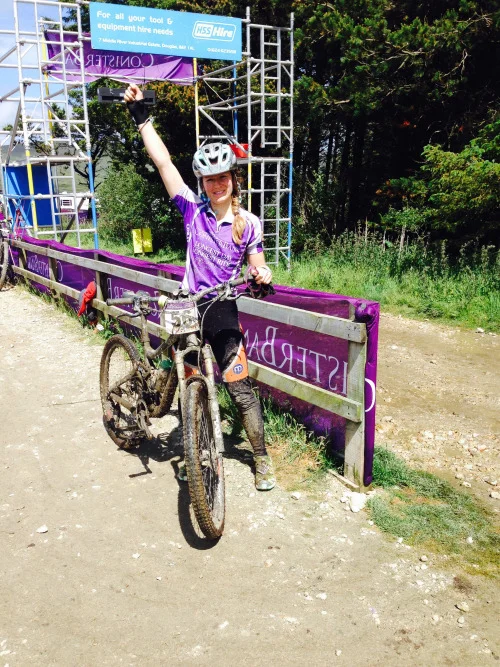
At the finish line of Longest Day, Longest Ride
Last month I competed in Longest Day, Longest Ride, a 24 hour endurance mountain bike race on the Isle of Man.
There were a few concerns at the top of my mind: I was on a borrowed bike, riding against some of the country's best MTB riders, and had done zero training.
Slow and steady was the order of the day (all 24 hours of it), and somehow I managed sixth place in the ladies, having completed 29 laps, and 87 miles.
Here's a video diary I made along the way.
I test out leggings from Tiny Fish on a yoga retreat
Read More
Laurel and Hardy
Since appearing in their first film together in 1921, slapstick duo Laurel and Hardy have been making the world laugh.
From causing chaos as door-to-door Christmas tree salesmen in Big Business, to their side-splitting dance sequence in Way Out West, their escapades never grow old.
And who can forget Hardy’s catchphrase: ‘Well, here’s another nice mess you’ve gotten me into.’
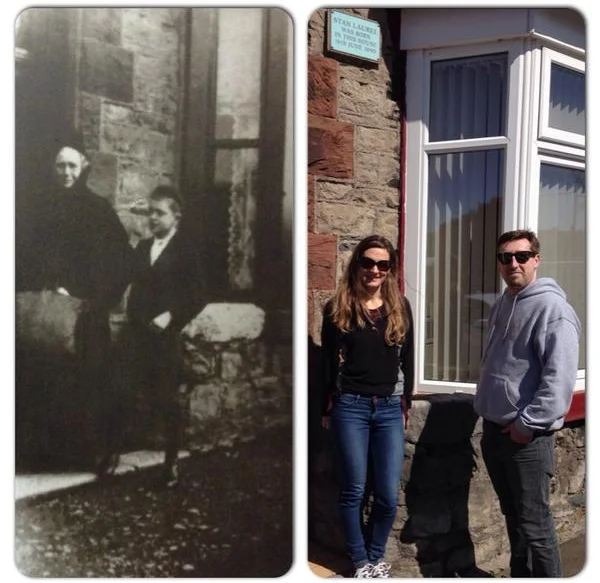
Stan with his grandmother, and, right, visiting their house with Mark Greenhow
This year marks 125 years since the birth of Stan Laurel and 50 since his death - so I revisited his birthplace, Ulverston, in Cumbria.
Known as a jumping-off point en route to the western Lakes District and for its vibrant festivals, this is where the comedian was born before moving to Glasgow.
But the Lancashire lad nearly didn’t make it - he almost died on the night he was born.
Mark Greenhow, owner and curator of the Laurel and Hardy Museum, showed me around his vast collection of memorabilia dedicated to the double act.
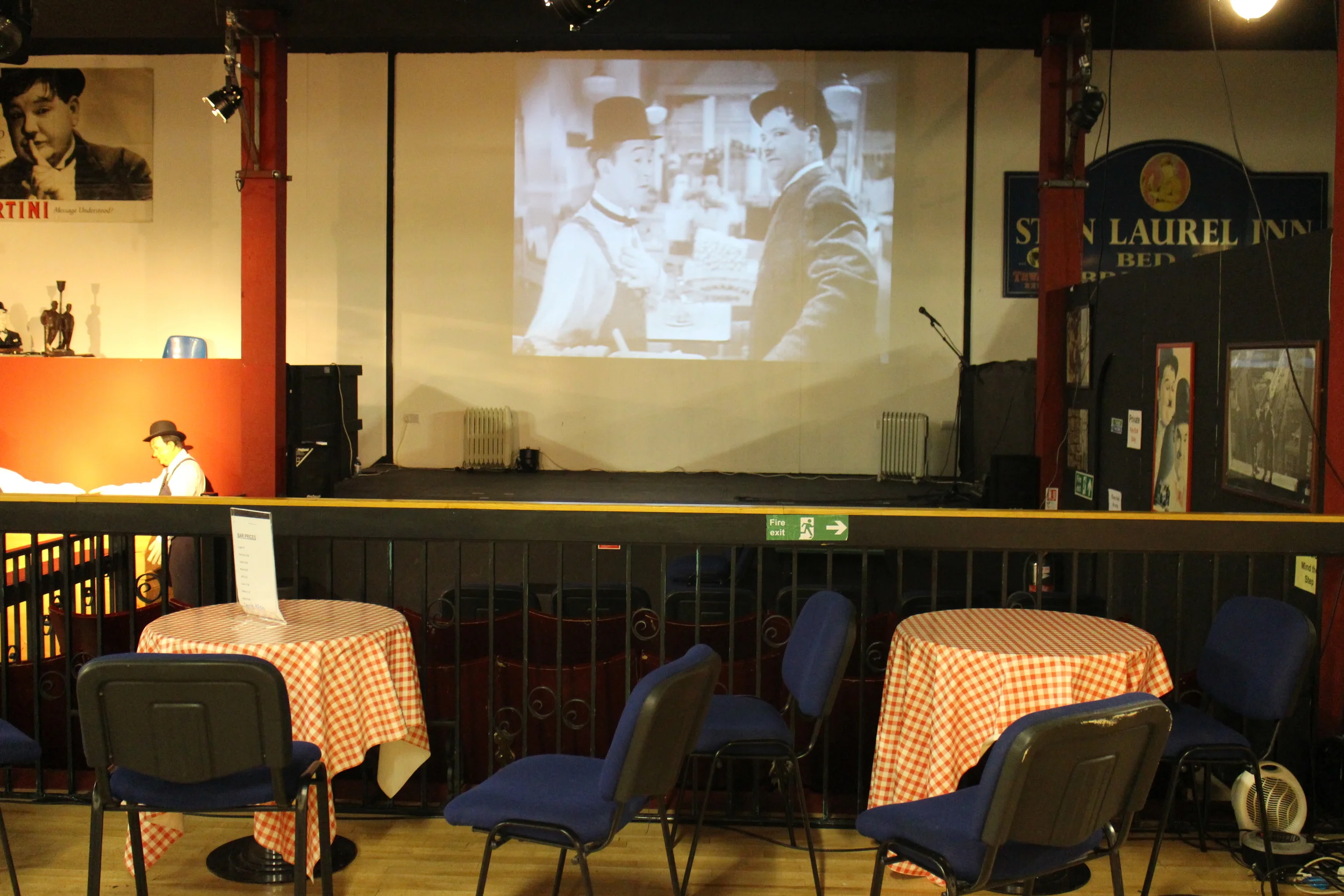
The Laurel and Hardy museum, housed in an old cinema, features a projector playing their films
Along with countless figurines, letters and photos, it includes a bed taken from Laurel’s grandparents’ house, a five-minute walk away.
Laurel - then known as Arthur Stanley Jefferson - was born in this stone cottage on June 16 1890.
“We like to think this was the bed Stan’s mother gave birth in,” he told me as we approached the iron bedstead, in the corner of the museum.
“He started life as a sickly child. They baptised him the evening of his birth because he wasn’t expected to survive the night.”
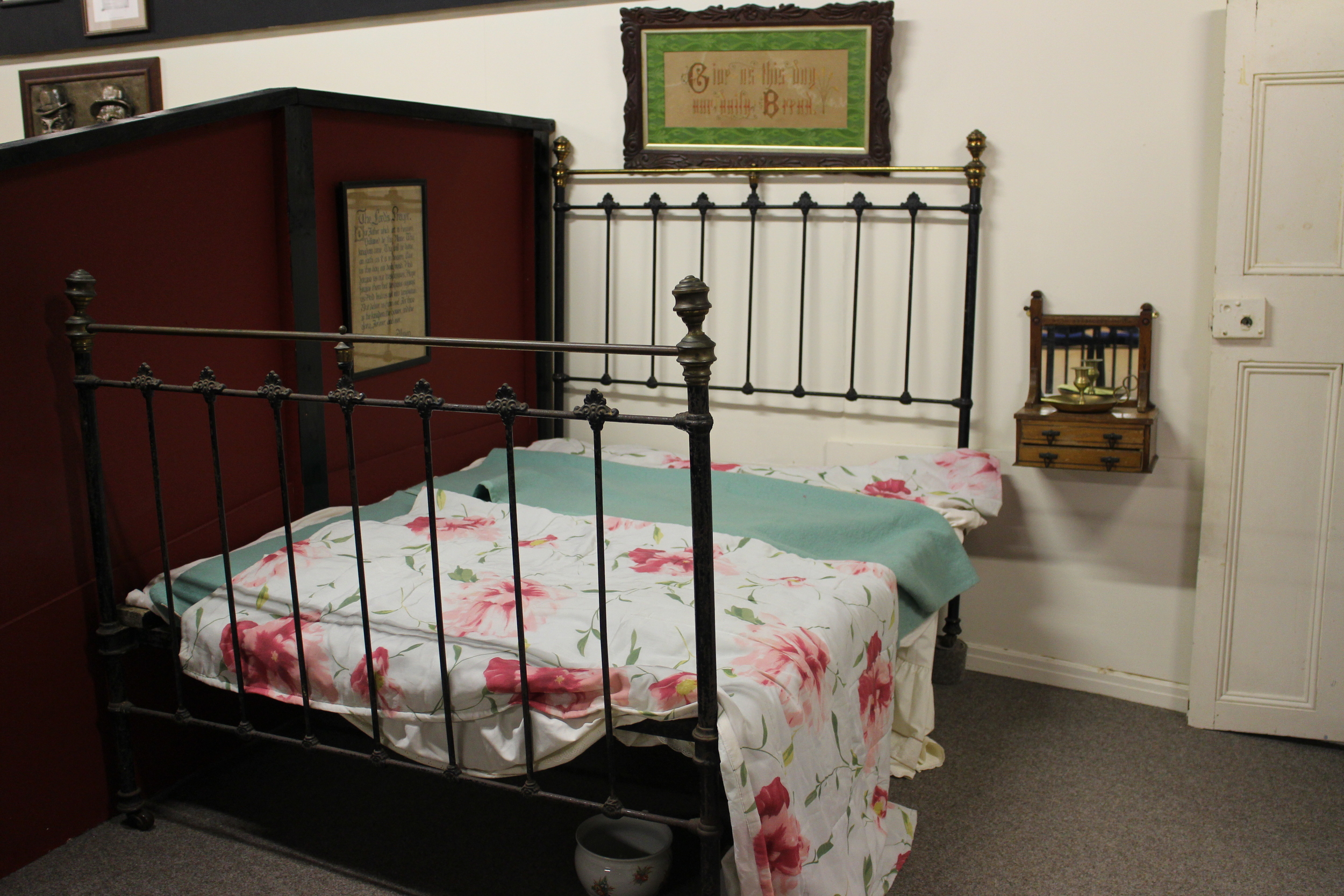
The bed Stan Laurel was born in
Laurel lived in Ulverston with his maternal grandparents until he was five, while his parents were away working for the theatre - his father as a manager and his mother as an actress.
He left for boarding school in County Durham, but would often take the train back to visit his grandparents for holidays.
Leaving the museum, I spotted the grinning figures of Stan and Ollie outside Coronation Hall, where they made a famous balcony appearance in 1947.
Graham Ibbeson’s bronze statue of the duo, unveiled in 2009 after ten years of fundraising, is a constant reminder that Ulverston’s most famous son started life here.
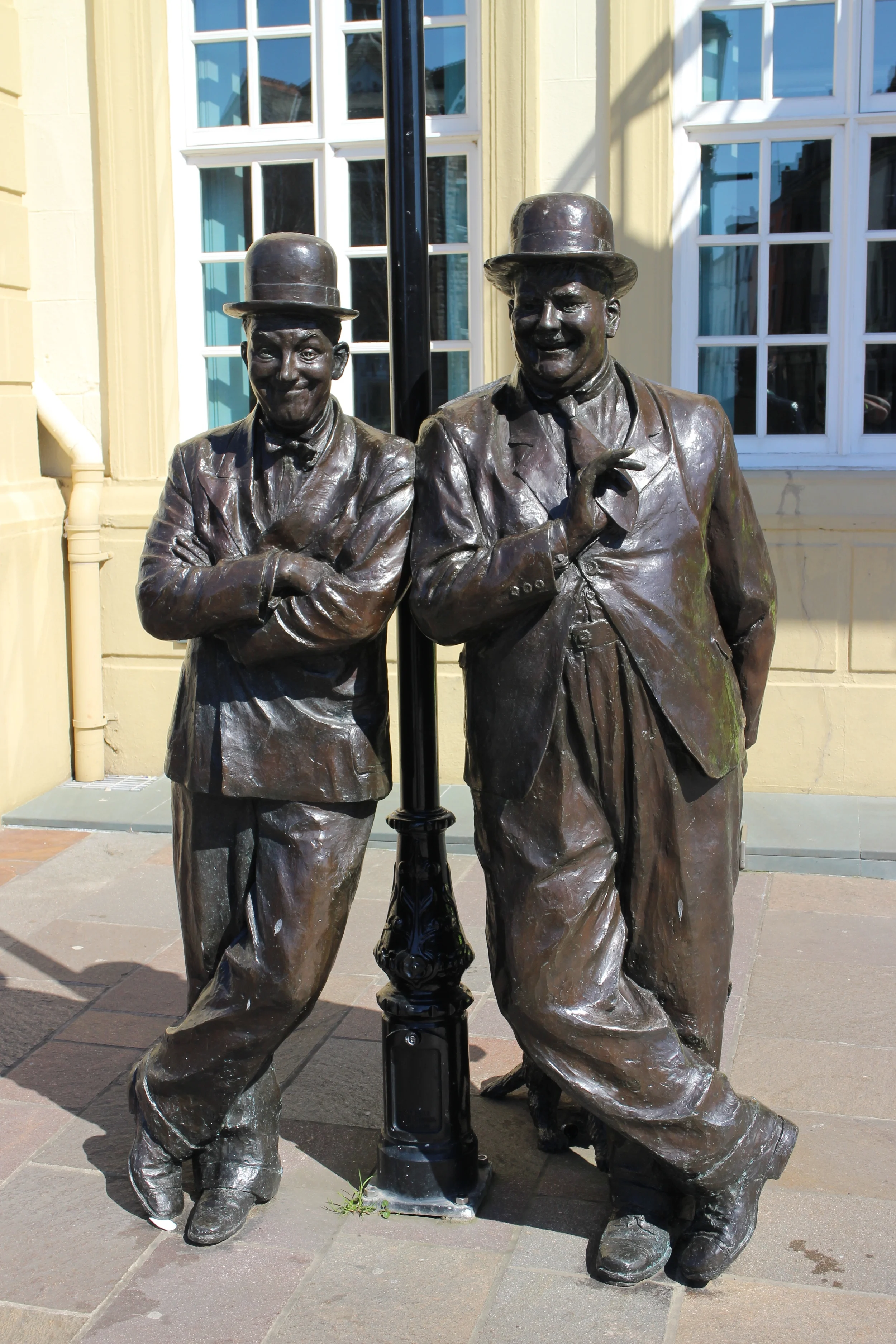
This 2009 statue of Laurel and Hardy was unveiled after a decade of fundraising
On June 20, the town will mark the anniversaries with Another Fine Fest, a festival of music, comedy and street theatre.
Many of the streets where the celebrations will take place would still be recognisable to Laurel today.
Market Street - where he used to go shopping with his grandmother - has changed little.
Overlooked by an 1845 clock tower, the cobbled avenue is still lined with independent shops, giving it an old-town feel.
One of these is the family-run grocers and tea room Gillam’s, where a young Laurel would buy his stash of Beer’s Treacle Toffee, made two streets away.
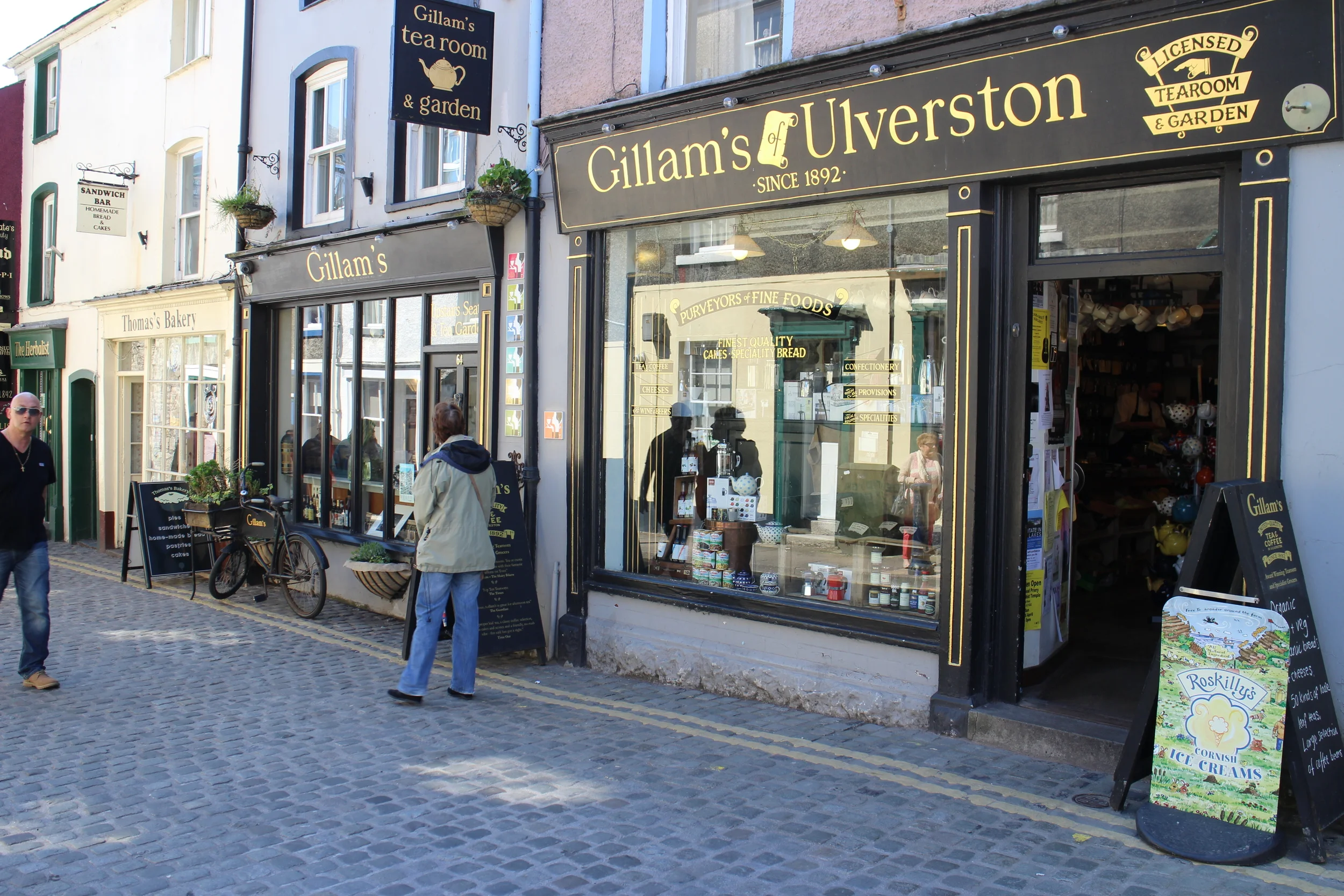
Gillam's, on Market Street, is where a young Laurel bought his toffees
Doug Gillam now runs the store, set up by his great great grandfather in 1892, and still uses the original brass scales to weigh out organic coffee and loose leaf tea.
An old delivery bike is parked outside, with a shop sign emblazoned across its frame.
This one is just for show, but in Laurel’s day, bicycles laden with toffees and other local produce would have bumped along the cobbles making deliveries.
“Some of my customers who are in their seventies used to be delivery boys,” he said, showing me around the store with its original quarry tiles and exposed stone walls.
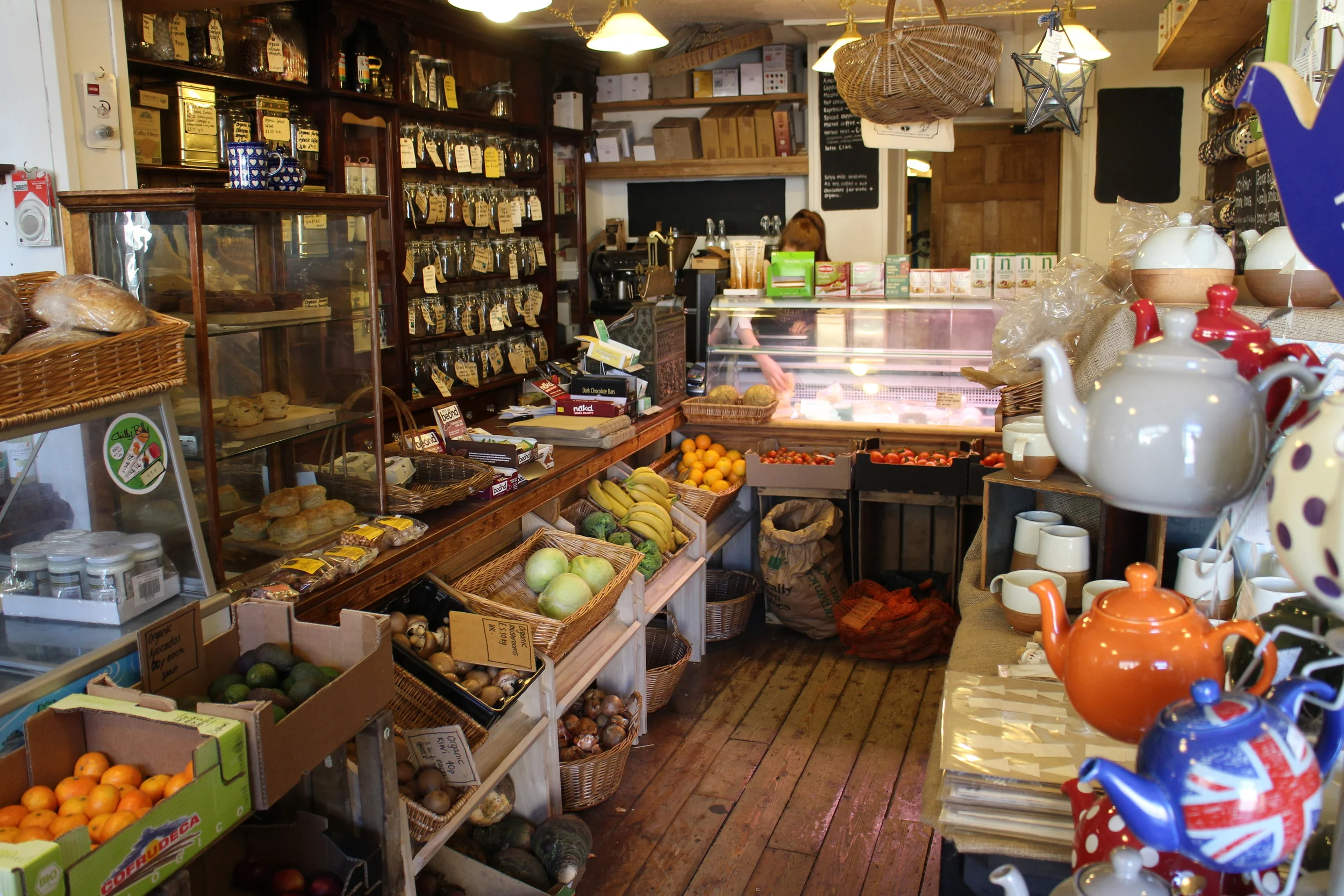
Gillam's still uses the original brass scales, once used to weigh out Stan Laurel's toffees
“It was hard work riding those bikes. Stan wrote fondly about coming here. People didn’t have much money in those days so buying sweets would have been a treat.”
The adjoining tea room is buzzing, and I ate lunch on a table next to a crackling wood burner from the 1850s, once used to heat a nearby Catholic school.
The menu is vegetarian - and I tucked into a £4.95 ‘bite and a sup’, Lancashire cheese, bread and homemade pickle with a pot of tea.
Afterwards, I strolled to the train station, leaving behind the spire of Holy Trinity Church, where Stan’s parents married in 1884, but is now flats.
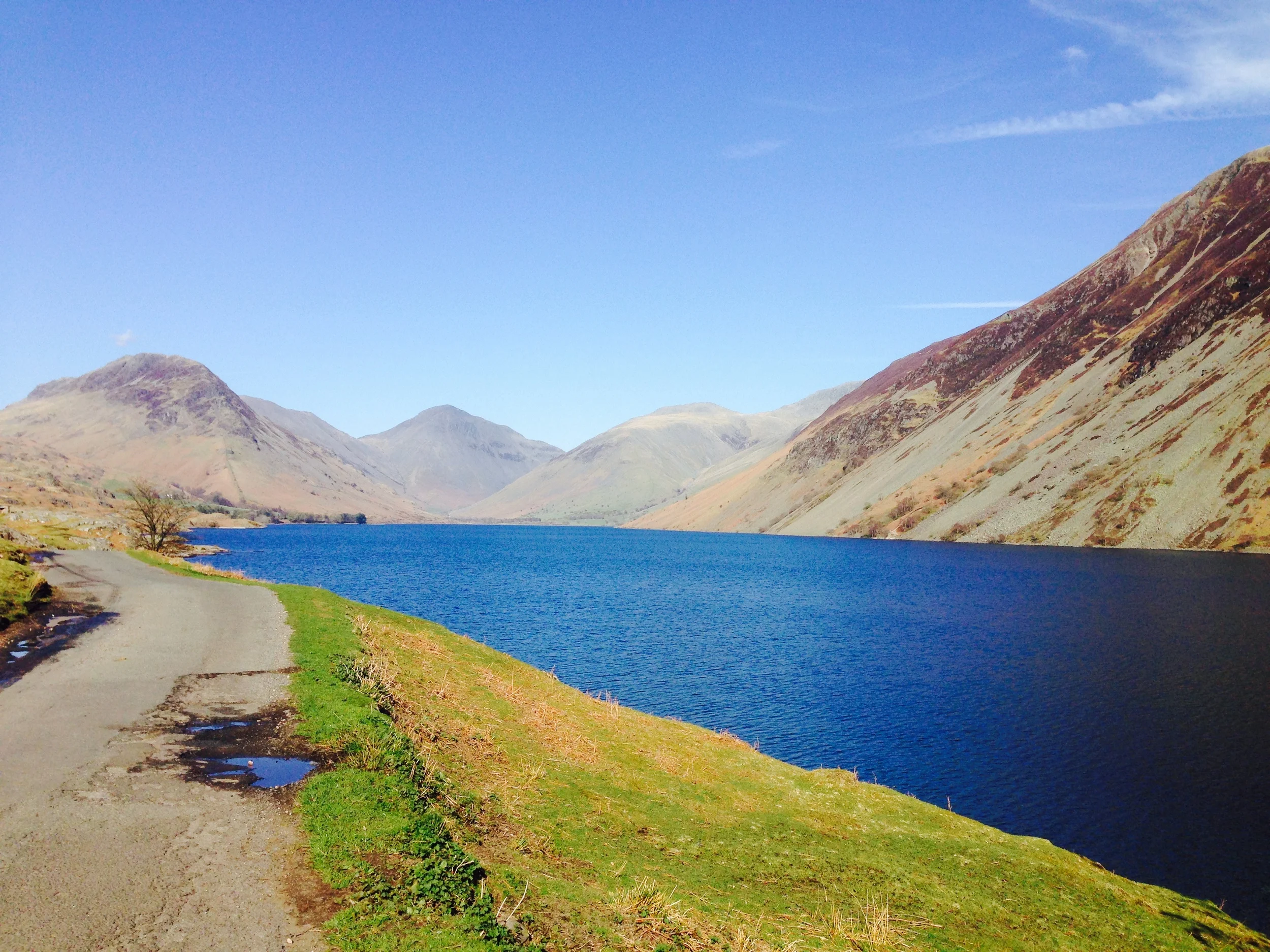
The Lake District, a view that Stan Laurel left behind
I headed out of Ulverston towards Lancaster on the same line that Laurel would have taken so often as a schoolboy after a visit to his grandparents.
Perhaps with toffees stuffed in his pockets, he would have passed these rolling meadows with grazing sheep, and Morecambe Bay, shimmering in the sun.
One day Laurel went further still, leaving Ulverston behind for good for the bright lights of Hollywood.

Mural of Stan Laurel in Ulverston

View from High Cup Nick on the Pennine Way
Today marks the 50th anniversary of Britain’s oldest National Trail, the Pennine Way. The 268-mile route was launched after walker and journalist Tom Stephenson wrote an article in 1935, saying that Britain needed ‘a long green trail’ like the Appalachian Trail in America. After 30 years of lobbying and hard work, the Pennine Way was opened on April 24 1965, spawning another 14 National Trails around the country.
To celebrate the anniversary, I walked the Cumbrian leg, 34 miles from Langdon Beck to Alston, to write an article for The Independent. Guided by some of the lovely folk from Penrith Ramblers Association, I had a few scrambles up rocky boulders and some tiring climbs (all while laden down with a Duke of Edinburgh-style backpack), but it was well worth taking the hike.
Here are 50 of my favourite pictures from the trip, one for every year that the trail has been open.
The Pennine Way turns 50
Setting off from Langdon Beck
By the River Tees
Langdon Beck Youth Hostel also turns 50 this year
Room with a view at Langdon Beck Youth Hostel
Luckily there were none of these
Beside the Tees
Stones from Lancashire Cotton Mills pave the boggiest areas
Hiking along the Tees
Cauldron Snout
Cow Green Reservoir
The long road to High Cup Nick
A winding road beside a firing range
High Cup Nick
Nichol Chair
Straight line of a Cumbrian stone wall
The Stag Inn, Dufton
Crossing a stone bridge after leaving Dufton
Map checking with Sue Tomlinson
Sue's notes from her Pennine Way trip in the seventies
A water logged shake hole
Heading to Cross Fell
Rocky, barren trail to Cross Fell
At the Cross Fell summit
Sue sledding down from Cross Fell
Greg's hut, a respite for walkers
Walking from Cross Fell to Garrigill
Beneath the bridge at Alston
View from the top of Cauldron Snout
Argo cats for crossing the boggy terrain
Dufton green
Harry sledding down Cross Fell
View from a shoe, High Cup Nick
Rambling on the Pennine Way
The steam train to Alston
All aboard the South Tynedale steam train
'England's last wilderness'
Gorge crossing before High Cup Nick
Pennine Way residents
View from High Cup Nick
Leaving High Cup for Dufton
A cairn on Cross Fell
Sheltering from the wind at lunch
Picnic spot
Cumbria leg completed
The Eden Valley
Walking 'the backbone of England'
The Pennine Way
The gorge
The Pennine Way
I haven’t got time to go to the gym…Sound familiar?
That might be because a lack of time has been identified as the top excuse people give to working out.
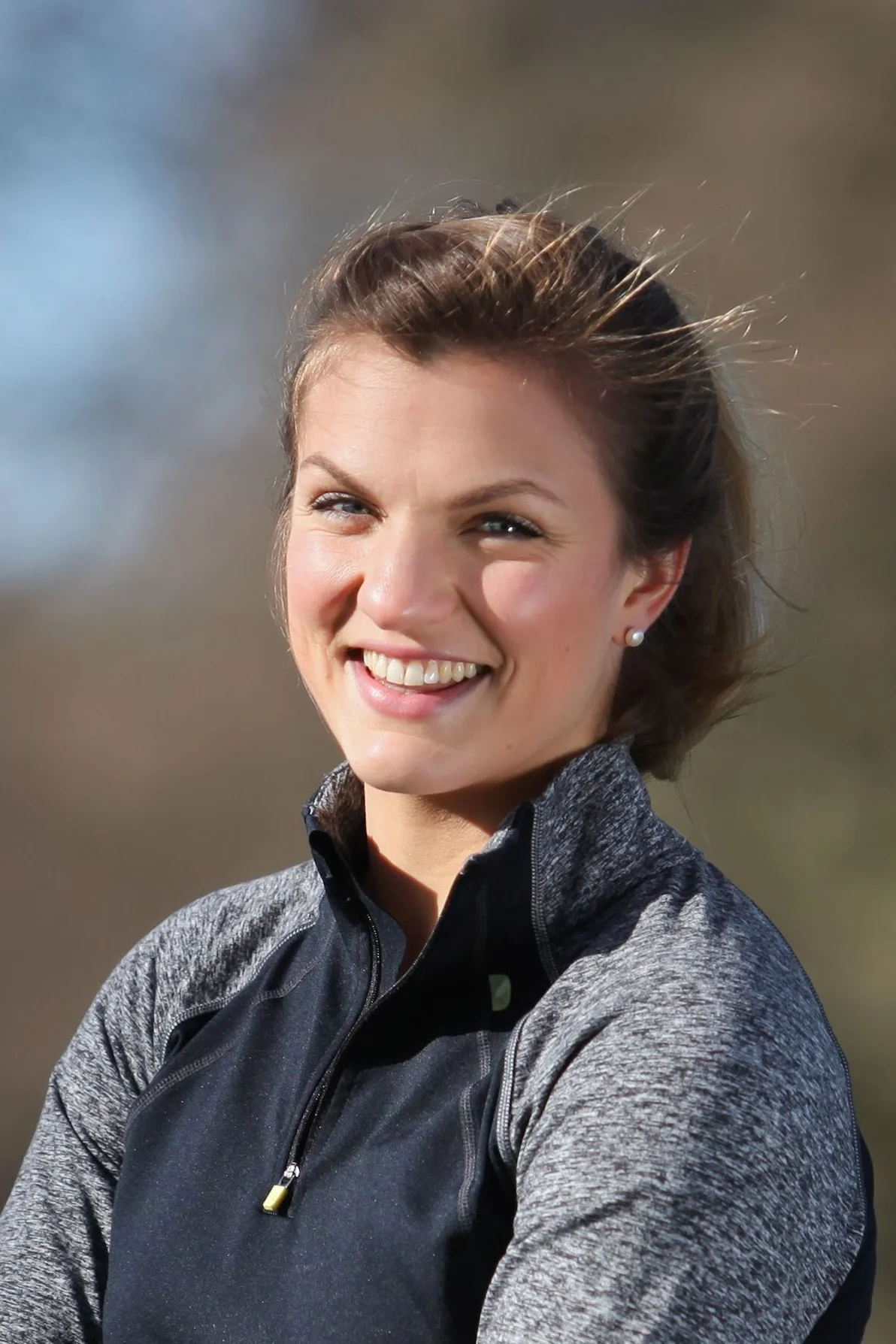
Hollie Shillito
The five biggest barriers to exercise are revealed in a new survey by Matalan – and they certainly ring a few bells with me.
Luckily, personal trainer Hollie Shillito is on hand to solve these problems in a few quick and easy steps.
1. I don’t have time
Hollie says: Include it in your day. Walk, run or cycle to work if you can and take the stairs rather than the escalator. You could even get off a stop earlier on the tube and walk the extra bit. When you take long calls, stand up instead of sitting.
Exercising is about priorities - how much do you want to rock your bikini, run that 10k or lose that belly fat? Get up an hour or even just half an hour earlier - many gyms open very early and most classes start from 6:30am. Mornings are getting lighter now so you can go for a walk or run before work.
Evidence shows exercise doesn't have to be done for long periods of time - bouts of ten minutes throughout the day all count toward the weekly 2.5 hour target. You can use high intensity interval training (HITT) or circuits to get hit the most muscles and get the biggest benefit.
2. I don’t find exercise fun

Try an unusual class, like SUP yoga at Hove Lagoon
Hollie says: Find something you like! There is exercise to suit everyone. Challenge yourself to try something different every month. Classes are a great introduction to exercise, are loads of fun and come in all shapes and sizes e.g. cardio, strength training, dance, even pole dancing and gladiator classes! Or you could try a new activity or sport such as rock climbing, netball, tennis or five-a-side football.
3. I can’t afford a gym membership
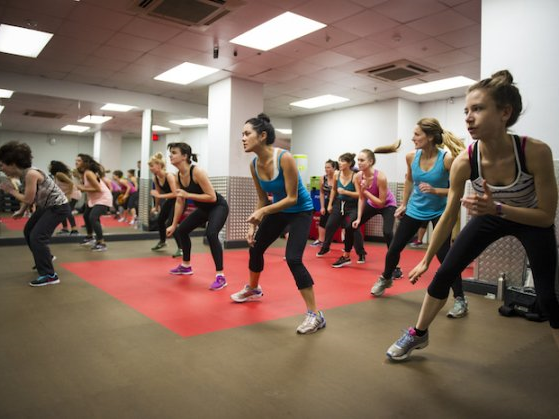
Try a fitness class instead of a gym membership
Hollie says: You don’t have to work out in a gym, you can go outside, use your local park or go to local community centres to see if they are running any classes. Look into gyms with no contract. Gyms such as Pure Gym and private fitness companies such as 1Rebel, Barry’s Bootcamp or Project Fit allow you to buy a monthly membership or a block of sessions rather than tying you into a contract.
4. I don’t enjoy working out in public places
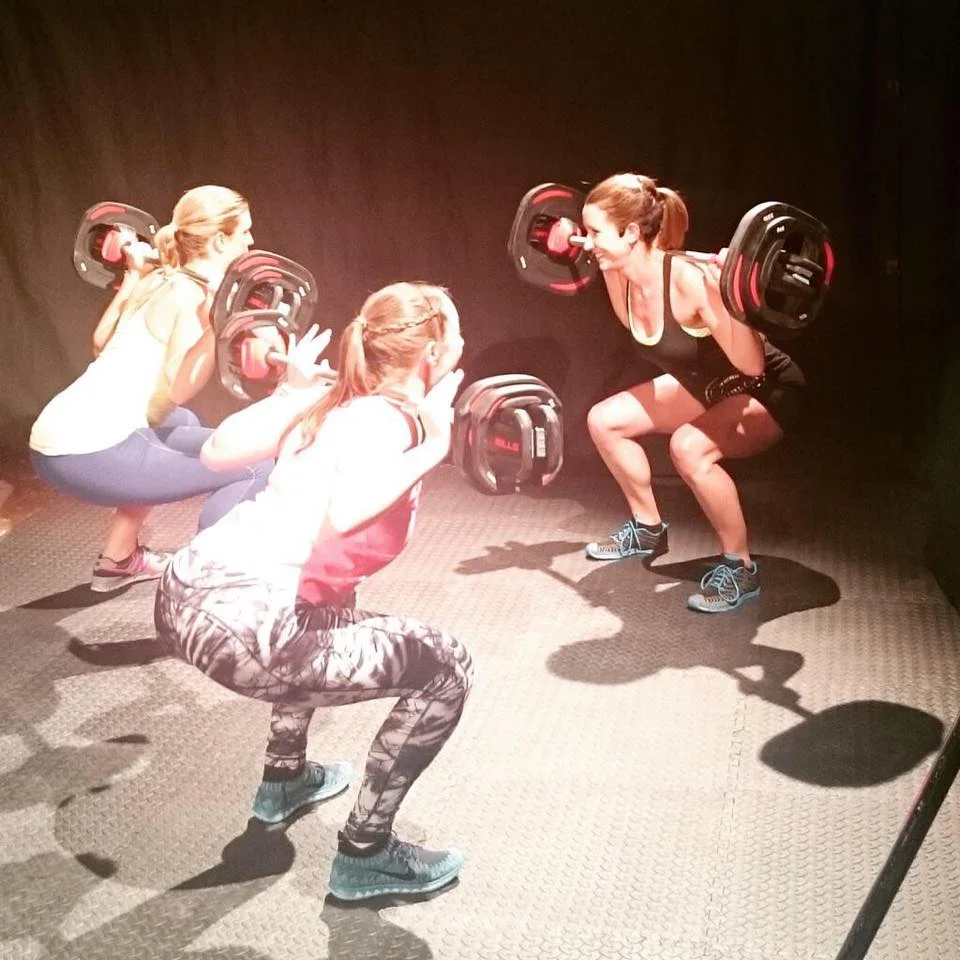
Small classes are great if you don't like to exercise in public places
Hollie says: Use your home or garden - fitness DVDs are great for guidance. Use your local gym - classes are good if you feel embarrassed as you can hide at the back!
5. I’ve not got enough space at home

Explore the outdoors
Hollie says: Go outside. See what classes are offered at your local park - there's everything from Nordic walking to buggy bootcamp to choose from. Buddy up with a friend who has a bigger house, go to a gym or local leisure centre.
You can follow Hollie's health and fitness updates on her Facebook page, and on Twitter. Or check out her website for more information.
Try as I might, I’m not a naturally relaxed person. There’s so much to do in the day and so little time that I sometimes end up GETTING JUST SO STRESSED OUT. So a three-night break to Paradis Plage - a surf, yoga and spa retreat in Morocco, booked through The Healthy Holiday Company - was surely the closest I was going to get to unleashing my inner zen. With sun, sea and a luxury hotel to boot, I was going to fly or die at chilling out.
A warm welcome
After a delayed flight from Gatwick to Agadir, my stress-o-meter was beginning to surge. But the one-hour transfer north to Paradis Plage was a breeze and I excitedly peered out of the taxi window at the coastline speeding past on our left beneath the moonlit sky. Walking into the plush entrance of Paradis Plage with its mosaic tiles, dappled lighting and water bowl filled with flowers, I felt calm even before being handed a cool, wet flannel that smelt of orange blossom. It is traditional in Morocco to use orange blossom water for making sweets - or to give it to guests to freshen up before entering a house. The hotel blends traditional Moroccan style with modern touches - in its three-hectare grounds you’ll find a north African tent just yards from an outdoor jacuzzi, and a spa that offers both ancestral and modern treatments.
Stepping inside my Premium Suite also helped me part ways with the stressed-out Londoner I’d been just hours before. Complete with kitchenette, dining area and lounge, it featured homely touches like surfing canvases, lamps made from driftwood - and bath towels sprinkled with flower petals. The immaculate bedroom had a sea-view balcony so the next morning I could simply reach from the bed and open the curtains to check the surf conditions.
The surfing
For beginners, you need only venture as far as the hotel beach to get your fill of surfing, which is generally best in the morning before the wind kicks in. You can either book lessons with the resort's four instructors or just board hire. For more advanced surfers, a surf guide can take you to the best spots in the Taghazout area. I spent a few hours paddling and nose-diving my board at the hotel beach with a few of the other guests - and enjoying it. Had I found my zen yet? Possibly not, but it was exhilarating launching myself across the waves and emerging like a triumphant drowned rat. Afterwards, I soothed my aching muscles in the spa’s hammam, relaxing as the steam filled the room and began to cleanse both body and mind.
The yoga
You can’t help being swept up in all things inner peace when you are sitting on a yoga mat, breathing deeply as you face the ocean, with the soothing sound of waves lapping against the shore. Run by Karim, who has been teaching yoga for 18 years, the yoga sessions take place three times a day in the resort’s beachfront studio with wooden floors and glass windows that give a panoramic view onto the Atlantic. I immersed myself in two sunrise sessions, and one at sunset.
“Surrender to gravity,” Karim said, padding about the room as my class of just four people lay down on our mats after more than an hour of stretching, balancing and breathing. “Relax your facial muscles and let all tension dissolve.” During our session, I had watched spellbound as the sky turned from dusty pink to fuchsia. Now that disc of sun was dipping below the horizon, becoming smaller and smaller until, like my own tension, it dissolved into the African night.
After three days of surfing, yoga and relaxing in Morocco, it seemed I had tracked down my inner zen. So next time I’m looking for it, I’ll know where to start.
I went to Scotland last month to write a piece about skiing for The Independent. I was dubious. This was the UK. Surely there was no way the snow - and the skiing - would be even remotely comparable to the Alps. Would the weather play ball? And what would the journey up there be like?
Here are five reasons why I was pleasantly surprised:
1. It's easy to get there
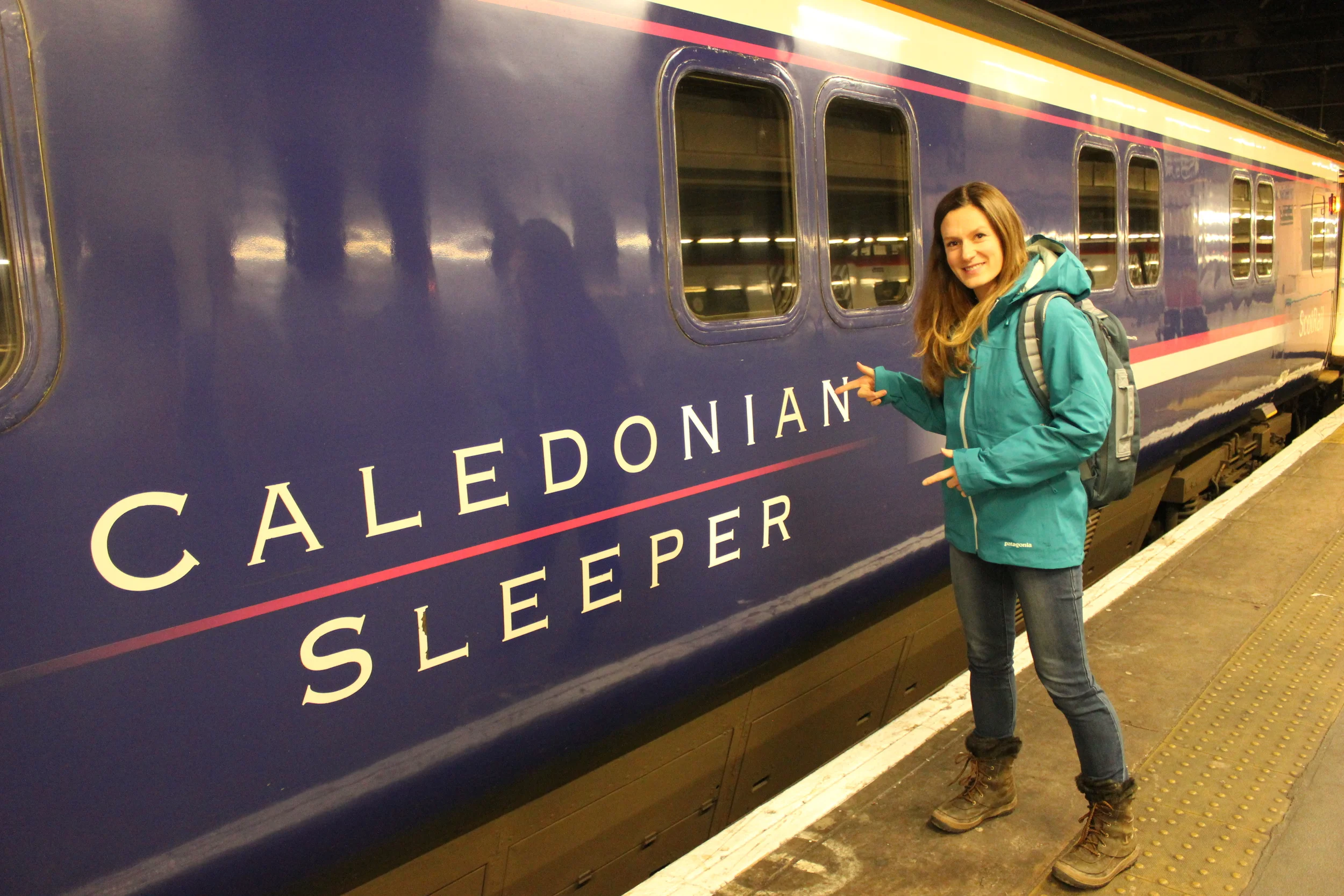
Catching the sleeper train from London
One Friday night after work, I simply boarded the Caledonian Sleeper train at London Euston. Bye bye flight check ins and long transfers that are part and parcel of a trip to the Alps. After a whisky nightcap in the lounge car with ‘Huggy’ and David, two guys who have been commuting on the sleeper for 15 years between them, I bedded down in my berth. It was snug - a narrow bunk bed and just enough space to squeeze my suitcase in - but it was all I needed. The next morning, just before 8am, I was woken up with a cup of tea and a half-hour warning ahead of my stop, Aviemore, a 20-minute drive from Cairngorm Mountain. Travelling through the night meant I was on the slopes by 9am on Saturday morning after a decent night’s kip. The return journey is on a Sunday night, and arrives back in London before 8am the following day. So you really can pack a skiing weekend into two days - and be back at your desk on Monday morning.
2. The conditions

Scottish skiing under blue skies and sunshine
Weather in Scotland can be unpredictable - the wind can whip up, reducing visibility at the top of the mountain and, if it’s strong enough, forcing lifts to close. But if you pick your days, skiing here is as good as the Alps. The first day of my weekend was blessed with sunshine and blue skies. After a night’s snowfall, on the second day I was treated to powder and silky soft snow coating the resort’s 18.5 miles of pistes. The temperature dropped to -7C, but I kept cosy in Patagonia gear, and warmed up with a hot chocolate at the Ptarmigan, the UK’s highest restaurant.
3. New changes mean now's the time to go
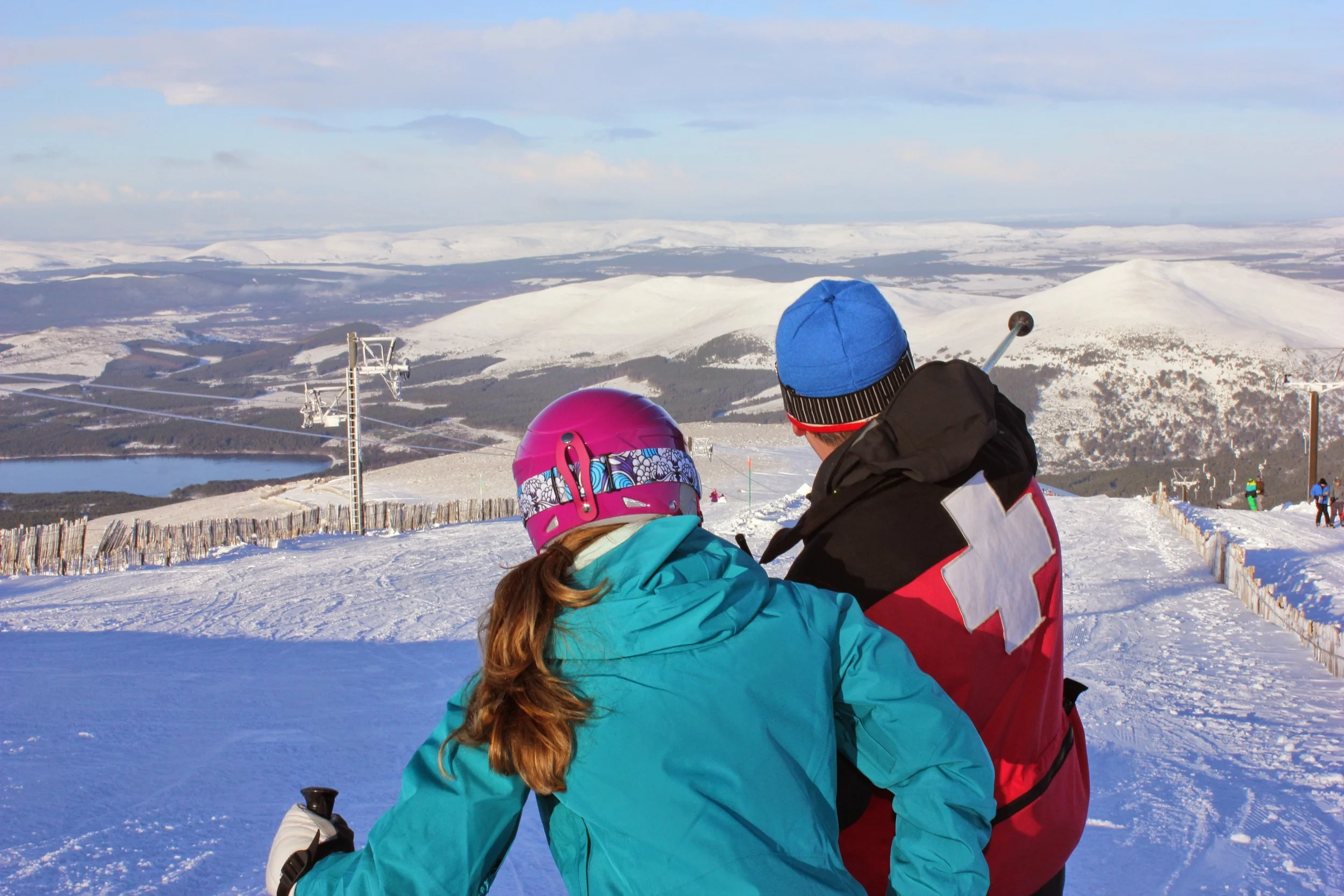
Ellie with Cairngorm senior ski patroller Jim Cornfoot
It’s an exciting time to visit Cairngorm Mountain. The resort was recently taken over by Natural Retreats, who have committed to a five-year, £6.2m investment. This includes a new restaurant at base station, The Storehouse, with wholesome, locally-sourced dishes that don’t break the bank. But it’s not just the leisure market who will benefit from the investment. For adrenaline junkies, a new freestyle area with rails and jumps is being built with the help of Team GB snowboarder and Cairngorm local, Jamie Trinder. There are also plans to open a training facility to help develop top athletes.
4. Other activities on offer

Kayaking on Loch Morlich (Pic credit: VisitScotland.com)
For non-skiing days, Aviemore offers a wealth of other indoor and outdoor activities, including dog sledding, whisky tours, kayaking on Loch Morlich, hiking, mountain biking, spa treatments, sailing and clay pigeon shooting. You can't imagine cramming in that much in Continental resorts. A brand new climbing wall has recently opened at Glenmore Lodge, while The Winking Owl pub has also benefited from a redevelopment and is a good place to refuel. For après-ski drinks, the Skiing Doo is a cosy basement bar with wooden booths and ceilings covered in skiing paraphernalia.
5. Home sweet home

Skiing the White Lady run on Cairngorm Mountain
The same language, the same currency - Skiing in Scotland is skiing at home. And there’s something deliciously sweet about carving up snowy pistes and knowing that you haven’t schlepped all the way to the Alps, but are right on your doorstep.